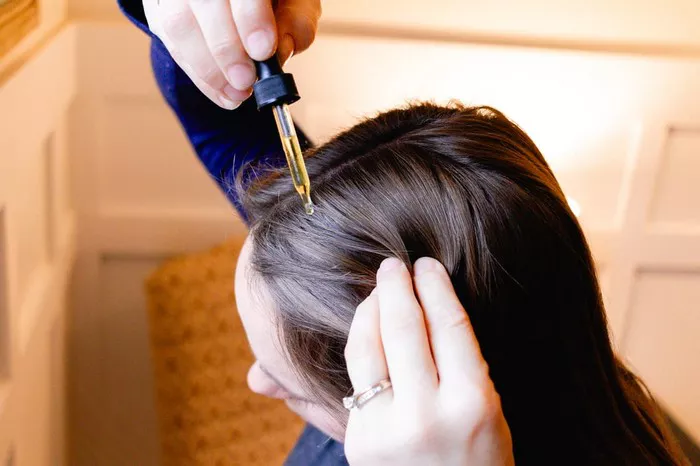Scalp oiling is an ancient practice used across cultures to maintain healthy hair and scalp. From India’s Ayurvedic traditions to Mediterranean olive oil rituals, people have relied on natural oils to nourish their roots for centuries. But what exactly does oiling the scalp do? Is it just a trend, or does it offer real benefits? This article explores the science, benefits, methods, and tips for effective scalp oiling. Let’s dive in.
What Is Scalp Oiling?
Scalp oiling involves applying natural oils directly to the scalp and hair. These oils can be plant-based (like coconut or jojoba) or mineral-based. The goal is to moisturize the scalp, strengthen hair follicles, and improve overall hair health. Unlike store-bought hair products, natural oils are free from harsh chemicals, making them gentle and safe for regular use.
Why Oiling the Scalp Matters
Your scalp is the foundation of healthy hair. Just like soil nourishes a plant, a well-cared-for scalp supports strong, shiny hair. Daily factors like pollution, heat styling, and chemical treatments can damage the scalp, leading to dryness, itchiness, or hair loss. Oiling acts as a protective shield and restorative treatment.
Key Benefits of Scalp Oiling
Moisturizes the Scalp
Dry scalp is a common issue caused by weather, hard water, or harsh shampoos. When the scalp lacks moisture, it becomes flaky and itchy. Natural oils lock in hydration, creating a barrier that prevents water loss. For example, coconut oil penetrates the hair shaft, while jojoba oil mimics the scalp’s natural sebum, providing deep moisture.
Reduces Dandruff and Flakes
Dandruff is often linked to a dry or fungal-infected scalp. Oils like neem, tea tree, or rosemary have antifungal and antibacterial properties. They combat the yeast (Malassezia) that causes dandruff. Regular oiling can soothe inflammation and reduce flakiness.
Strengthens Hair Follicles
Weak hair follicles lead to breakage and thinning. Oils rich in vitamins (A, E, D) and fatty acids (like omega-3s) nourish follicles. Castor oil, for instance, contains ricinoleic acid, which boosts circulation and promotes thicker hair growth.
Improves Blood Circulation
Massaging oil into the scalp stimulates blood flow. Increased circulation delivers oxygen and nutrients to hair roots, encouraging growth. Try using peppermint or rosemary oil for a tingling effect that enhances this benefit.
Prevents Hair Damage
Heat tools and UV exposure weaken hair. Oiling forms a protective layer, reducing friction and split ends. Argan oil is especially effective for shielding hair from heat up to 450°F.
Balances Oil Production
Paradoxically, oiling can help oily scalps. Over-washing strips natural oils, prompting the scalp to overproduce sebum. Light oils like grapeseed regulate sebum production, preventing greasiness.
Soothes Stress
A warm oil massage relaxes tense muscles and calms the mind. Lavender or chamomile oil can enhance this effect, reducing stress hormones that contribute to hair loss.
Enhances Hair Shine and Softness
Oils smooth the hair cuticle, reflecting light for a glossy finish. Almond oil, rich in vitamin E, adds shine without weighing hair down.
How to Oil Your Scalp Correctly
Choose the Right Oil
- Dry Scalp: Coconut, olive, or avocado oil.
- Oily Scalp: Jojoba, grapeseed, or tea tree oil.
- Hair Growth: Castor, rosemary, or peppermint oil.
- Dandruff: Neem, tea tree, or fenugreek oil.
Warm the Oil
Heat 1–2 tablespoons of oil slightly (not hot) to enhance absorption.
Apply to Scalp
Use a dropper or fingertips to part hair and apply oil directly to the scalp. Focus on areas with dryness or thinning.
Massage Gently
Use circular motions with your fingertips for 5–10 minutes. Avoid scratching.
Leave On or Rinse
Leave the oil for 30 minutes to overnight. For heavy oils, wash out with a mild shampoo.
Frequency
- Oily Hair: Once a week.
- Dry Hair: 2–3 times a week.
- Normal Hair: Once a week.
Best Oils for Scalp Health
- Coconut Oil: Penetrates deeply; antifungal.
- Jojoba Oil: Balances sebum; non-greasy.
- Rosemary Oil: Boosts growth; improves circulation.
- Argan Oil: Protects from heat; adds shine.
- Castor Oil: Thickens hair; high in antioxidants.
Common Mistakes to Avoid
- Using Too Much Oil: A little goes a long way. Excess oil clogs pores.
- Skipping the Massage: Massage is key for absorption.
- Wrong Oil for Hair Type: Heavy oils can worsen oily scalps.
- Not Washing Properly: Residue causes buildup. Use a clarifying shampoo if needed.
Scientific Evidence Behind Scalp Oiling
Studies show coconut oil reduces protein loss in hair, while tea tree oil (5% concentration) significantly reduces dandruff. Ayurvedic research highlights bhringraj oil’s role in promoting melanin and hair density.
Cultural Practices and Modern Adaptations
In India, “champi” (oil massage) is a bonding ritual. Meanwhile, the “no-poo” movement advocates oil cleansing as a shampoo alternative.
Conclusion
Scalp oiling is a simple, cost-effective way to transform hair health. Whether tackling dandruff, dryness, or thinning, the right oil can work wonders. Consistency is key—make oiling a part of your routine for stronger, shinier hair.
By understanding your scalp’s needs and choosing oils wisely, you’ll unlock the secret to luscious locks that have been trusted for generations.
Related topics:
How To Do Scalp Oiling: A Step-By-Step Guide
Scalp Oiling Before Washing for Healthy Hair: A Full Guide
Oiling Scalp with a Sew-In Net: A Step-By-Step Guide


